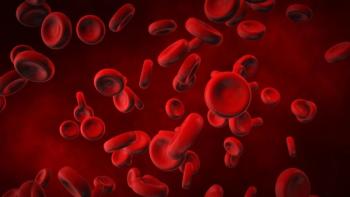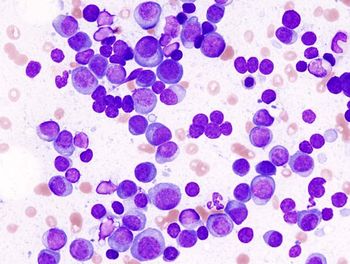
AEs to Monitor With Enfortumab Vedotin/Pembrolizumab in Advanced Bladder Cancer

Neuropathy is an adverse effect that can occur when enfortumab veodtin is administered to patients with locally advanced or metastatic urothelial carcinoma.
Kirollos S. Hanna, PharmD, BCPS, BCOP, FACC, spoke about the adverse effects (AE) associated with this treatment and how clinicians can become better aware of them.
Hanna, director of pharmacy at Minnesota Oncology and assistant professor of pharmacy at the Mayo Clinic College of Medicine and Science, focused on skin reactions, neuropathy, and hyperglycemia, which are commonly observed with enfortumab vedotin administration.
Transcript:
When we look at the safety, we now have 2 therapeutics that are going to come with some shared [adverse] effects [AEs] in some regard, but also significant differences when you look at enfortumab vedotin; it is cytotoxic in nature, while it is targeting Nectin-4 expression. It is cytotoxic through its payload, so we’re going to be considering cytotoxic AEs. When you look at pembrolizumab, it’s immunotherapy, and you’re going to be worried about those immune-related AEs [irAEs] that we’re all very familiar with. When you talk about enfortumab vedotin, 3 things come to mind around AEs.
We need to be monitoring, and we should be vigilant of neuropathy whether a patient has preexisting neuropathy or not; the MMAE component is known to lead to neuropathy. It’s generally sensory, but it does get better with dose reductions and dose modifications. We have to watch that in our patients. No. 2 is that with enfortumab vedotin, some of these patients might experience a rash, and in the clinical studies, about half of the patients experienced a rash. In rare cases, it could be a severe rash. It could be things like Stevens-Johnson syndrome. The reason for that is because we know there is Nectin-4 expression that is on the skin. As these patients are coming in for their infusion, whether you’re using enfortumab vedotin for them as monotherapy or in combination with pembrolizumab, because there are some differences in the schedule, these patients will be coming in roughly every week. There’s a lot of frequent touch points with these patients. When they are seeing our providers or when they are in the infusion center, we want to make sure that we are looking at their skin and having these evaluations. Don’t just look at their extremities. Look at their chest, look at their back, and make sure that that rash, we want to catch it early vs getting to a severe stage. Again, that improves with dose holds and dose modifications, and supportive care as well.
The other thing that comes to mind with enfortumab vedotin is going to be hyperglycemia. Hyperglycemia can sometimes occur with this. We just want to monitor it. If you have a patient who is diabetic, maybe monitor it a little bit more closely. It can exacerbate the neuropathy if it’s left uncontrolled, but just something to be cognizant of. Then, just being cytotoxic, you’re going to want to watch out for any hematologic AEs as you would with any other cytotoxic agent. The pembrolizumab is going to [result in] IRAEs. You have your standard IRAEs with the gastrointestinal AEs in your liver with alanine transaminase/aspartate transaminase elevations, transaminase impact, and skin toxicities.
References
- FDA approves enfortumab vedotin-ejfv with pembrolizumab for locally advanced or metastatic urothelial cancer. FDA. December 15, 2023. Accessed March 28, 2024. https://bit.ly/48ls9bi
- Hoimes CJ, Flaig TW, Milowsky MI, et al. Enfortumab vedotin plus pembrolizumab in previously untreated advanced urothelial cancer. J Clin Oncol. 2023;41(1):22-31. doi:10.1200/JCO.22.01643
Newsletter
Stay up to date on recent advances in the multidisciplinary approach to cancer.

















































































